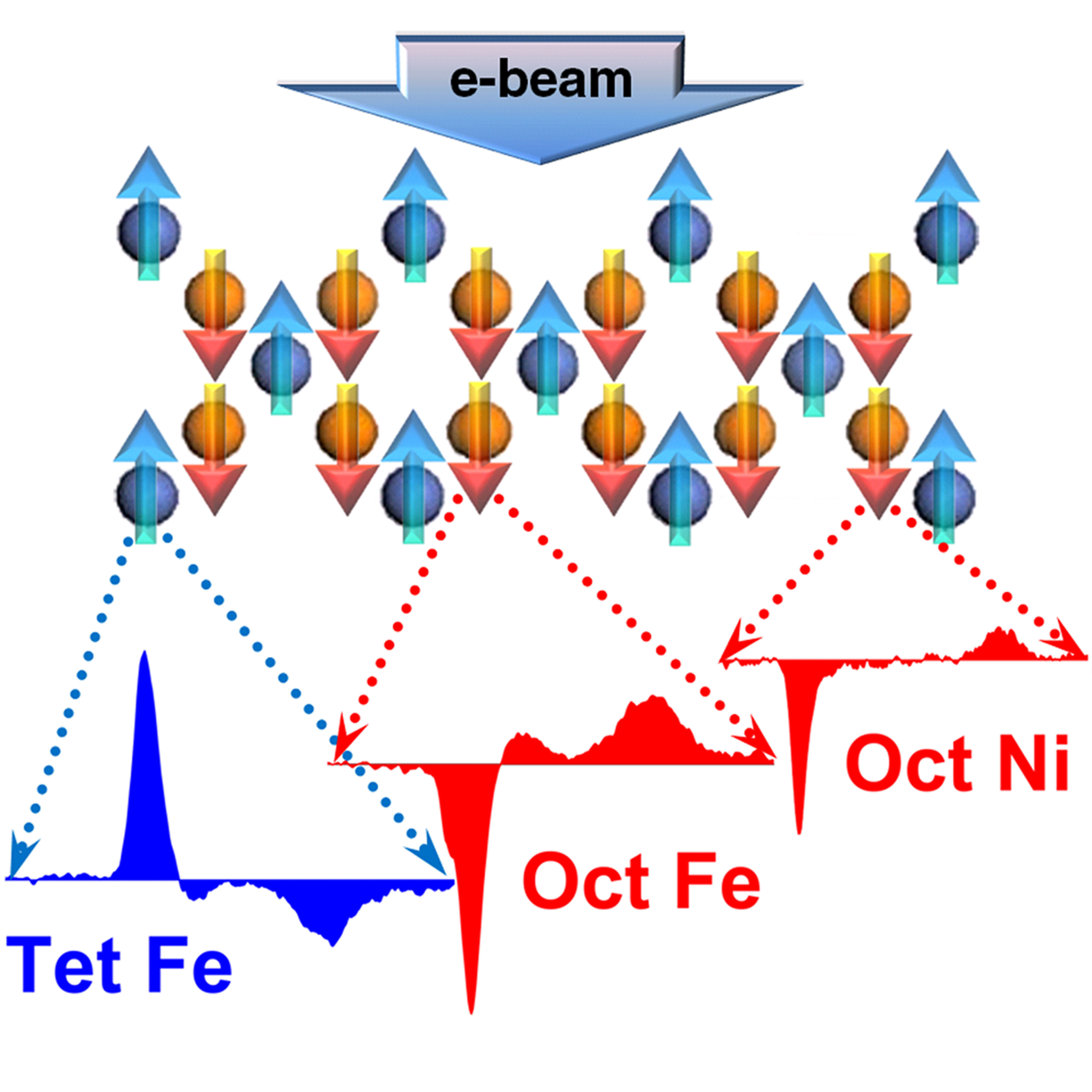IT-5-P-5821 Quantitative measurement of site-specific spin and orbital magnetic moments by electron energy-loss chiral magnetic dichroism
In this work, we have developed the site-specific electron energy-loss magnetic chiral dichroism (EMCD) method for local magnetic moment determination in magnetic materials with non-equivalent crystallographic sites at a nanometer scale. It’s the first work to experimentally demonstrate that the fast electron as a new source can be used to determine magnetic structure, including quantitative magnetic moments, for a wide range of materials, which is generally considered to be accomplished by neutron diffraction. Compared with previous EMCD works in which EMCD was just used for detecting the ferromagnetic signals of materials, we fundamentally raise the EMCD technique to the new level of magnetic structure determination.
In the example of NiFe2O4, we achieve comprehensive magnetic structure information using the site-specific EMCD method under the assumption of no magnetic information known previously. The magnetic structure information we obtain includes site-specific total magnetic moment, site-specific orbital to spin magnetic moment (mL/mS) ratio and total magnetic moment of a unit cell. Our method is testified to be valid by comparing our results with those obtained by theoretical calculations and other experimental techniques such as X-ray magnetic circular dichroism and neutron diffraction. Using transmitted electron in site-specific EMCD method, we can reach a high spatial resolution, and get site-specific and element-specific magnetic information, as well as distinguish the orbital and spin magnetic moments.
In the technical aspects, the extremely strong EMCD signals have been achieved by using site-specific EMCD method, which allow us to do quantitative analysis. We first did the quantitative works on EMCD spectra to obtain total magnetic moments (the sum of spin and orbital magnetic moments) for atoms in different sites. For example, our work first reports the experimentally determined mL/mS ratios of Fe atoms in octahedral and tetrahedral sites.
In sum, our work opens the door of using fast electrons to determine magnetic structures for a wide range of magnetic materials in a nanometer scale. Site-specific EMCD may benefit much not only to the fundamental research of magnetic states and behavior in complex magnetic materials, but also to revealing the magnetic structure in nanostructures or interface of the composite magnetic films.
This work is financially supported by National 973 Project of China and Chinese National Nature Science Foundation. This work made use of the resources of the Beijing National Center for Electron Microscopy. The authors are grateful to Profs. Z.H. Zhang, J. Yuan, X.Q. Pan, D.S. Wang, Dr. L. Xie, Mr. Y. Xia, D.S. Song, Z.Y. Wang, Profs. S.P. Crane, R. Ramash, Q. Zhan and Dr. S. Löffler.

Fig. 1: Schematic image of site-specific electron energy-loss chiral magnetic dichroism |